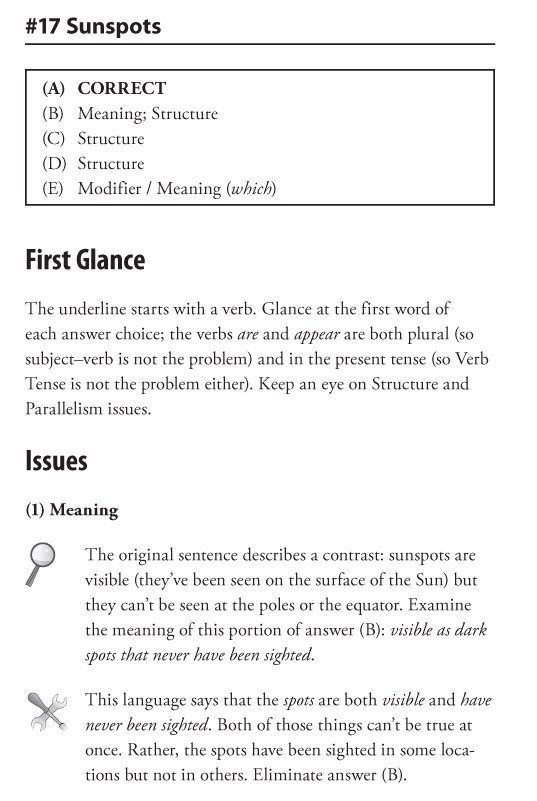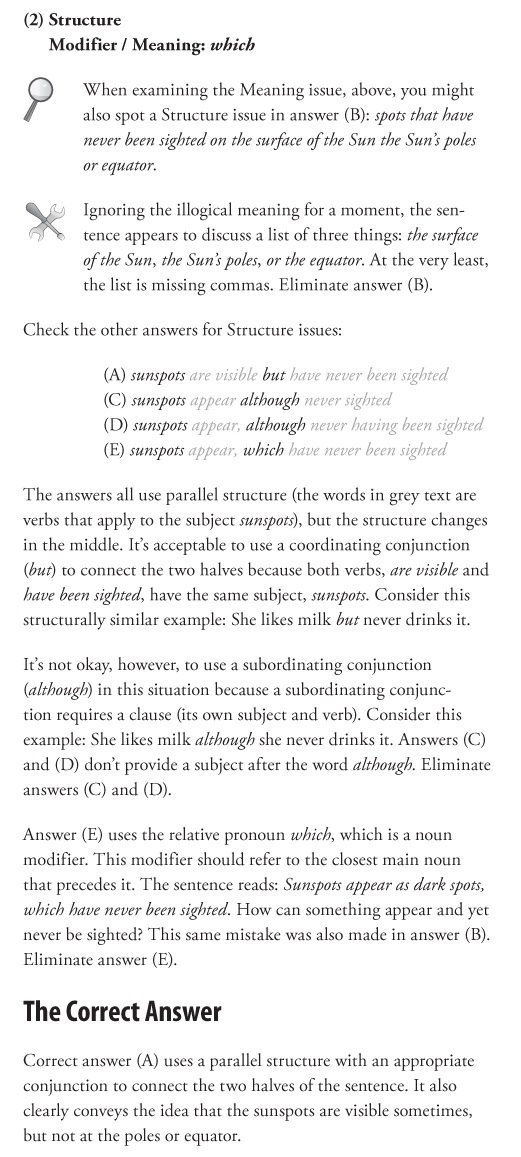Events & Promotions
|
|

GMAT Club Daily Prep
Thank you for using the timer - this advanced tool can estimate your performance and suggest more practice questions. We have subscribed you to Daily Prep Questions via email.
Customized
for You
Track
Your Progress
Practice
Pays
Not interested in getting valuable practice questions and articles delivered to your email? No problem, unsubscribe here.
- Nov 20
07:30 AM PST
-08:30 AM PST
Learn what truly sets the UC Riverside MBA apart and how it helps in your professional growth - Nov 19
12:30 PM EST
-01:30 PM EST
Learn how Keshav, a Chartered Accountant, scored an impressive 705 on GMAT in just 30 days with GMATWhiz's expert guidance. In this video, he shares preparation tips and strategies that worked for him, including the mock, time management, and more - Nov 20
01:30 PM EST
-02:30 PM IST
Learn how Kamakshi achieved a GMAT 675 with an impressive 96th %ile in Data Insights. Discover the unique methods and exam strategies that helped her excel in DI along with other sections for a balanced and high score. - Nov 22
11:00 AM IST
-01:00 PM IST
Do RC/MSR passages scare you? e-GMAT is conducting a masterclass to help you learn – Learn effective reading strategies Tackle difficult RC & MSR with confidence Excel in timed test environment - Nov 23
11:00 AM IST
-01:00 PM IST
Attend this free GMAT Algebra Webinar and learn how to master the most challenging Inequalities and Absolute Value problems with ease. - Nov 24
07:00 PM PST
-08:00 PM PST
Full-length FE mock with insightful analytics, weakness diagnosis, and video explanations! - Nov 25
10:00 AM EST
-11:00 AM EST
Prefer video-based learning? The Target Test Prep OnDemand course is a one-of-a-kind video masterclass featuring 400 hours of lecture-style teaching by Scott Woodbury-Stewart, founder of Target Test Prep and one of the most accomplished GMAT instructors.
A
Be sure to select an answer first to save it in the Error Log before revealing the correct answer (OA)!
Difficulty:
 35%
(medium)
35%
(medium)
Question Stats:
70% (01:33) correct 30%
(01:41)
wrong
30%
(01:41)
wrong  based on 12078
sessions
based on 12078
sessions
History
Date
Time
Result
Not Attempted Yet
Sunspots, vortices of gas associated with strong electromagnetic activity, are visible as dark spots on the surface of the Sun but have never been sighted on the Sun’s poles or equator.
(A) are visible as dark spots on the surface of the Sun but have never been sighted on
(B) are visible as dark spots that never have been sighted on the surface of the Sun
(C) appear on the surface of the Sun as dark spots although never sighted at
(D) appear as dark spots on the surface of the Sun, although never having been sighted at
(E) appear as dark spots on the Sun's surface, which have never been sighted on
(A) are visible as dark spots on the surface of the Sun but have never been sighted on
(B) are visible as dark spots that never have been sighted on the surface of the Sun
(C) appear on the surface of the Sun as dark spots although never sighted at
(D) appear as dark spots on the surface of the Sun, although never having been sighted at
(E) appear as dark spots on the Sun's surface, which have never been sighted on
This is Q14 of the OG 12th ed. (Q9 of the OG 11th ed) However:
1. I don't understand the OE of option (C), in that "sighted is not a complete verb".
2. I don't understand the OE of the top paragraph which states "The adjective visible is a complement and is parallel to the past particle sighted"
Would appreciate any form of explanation. Thanks
The New American Desk Encyclopedia - Page 1174
https://books.google.com.my/books?isbn=0452011094
Meridian, Meridian Editors, Concord Reference Staff - 1994
SUNSPOTS, apparently dark spots visible on the face of the sun. Vortices of gas associated with strong electromagnetic activity, their dark appearance is merely one of contrast with the surrounding photosphere.

01.jpg [ 103.89 KiB | Viewed 70006 times ]

02.jpg [ 196.91 KiB | Viewed 70070 times ]
1. I don't understand the OE of option (C), in that "sighted is not a complete verb".
2. I don't understand the OE of the top paragraph which states "The adjective visible is a complement and is parallel to the past particle sighted"
Would appreciate any form of explanation. Thanks
The New American Desk Encyclopedia - Page 1174
https://books.google.com.my/books?isbn=0452011094
Meridian, Meridian Editors, Concord Reference Staff - 1994
SUNSPOTS, apparently dark spots visible on the face of the sun. Vortices of gas associated with strong electromagnetic activity, their dark appearance is merely one of contrast with the surrounding photosphere.
Attachment:
01.jpg [ 103.89 KiB | Viewed 70006 times ]
Attachment:
02.jpg [ 196.91 KiB | Viewed 70070 times ]
Kudos
Bookmarks
This is indeed not a test of //ism; rather it is about meaning and grammar. If you are thinking about the verb //ism here, there is only one // marker, namely, the fanboy conjunction but. The verbs on either sides of the ‘but’ are in present and present perfect tenses, which is acceptable.
(A) are visible as dark spots on the surface of the Sun but have never been sighted on ---- correct choice.
(B) are visible as dark spots that never have been sighted on the surface of the Sun ----- the vortices have been sighted on the surface; Choice says they never have been sighted; total reversal of the original meaning
(C) appear on the surface of the Sun as dark spots although never sighted at ---- although never have been is a fragment; The subordinate conjunction’ although’ requires a subject and verb or minimum a verb’
(D) appear as dark spots on the surface of the Sun, although never having been sighted at – ‘although never having been sighted at’ is not a sub-clause; same problem as in C
(E) appear as dark spots on the Sun's surface, which have never been sighted on – which flouts the relative pronoun touch rule
A is the choice
(A) are visible as dark spots on the surface of the Sun but have never been sighted on ---- correct choice.
(B) are visible as dark spots that never have been sighted on the surface of the Sun ----- the vortices have been sighted on the surface; Choice says they never have been sighted; total reversal of the original meaning
(C) appear on the surface of the Sun as dark spots although never sighted at ---- although never have been is a fragment; The subordinate conjunction’ although’ requires a subject and verb or minimum a verb’
(D) appear as dark spots on the surface of the Sun, although never having been sighted at – ‘although never having been sighted at’ is not a sub-clause; same problem as in C
(E) appear as dark spots on the Sun's surface, which have never been sighted on – which flouts the relative pronoun touch rule
A is the choice
Kudos
Bookmarks












